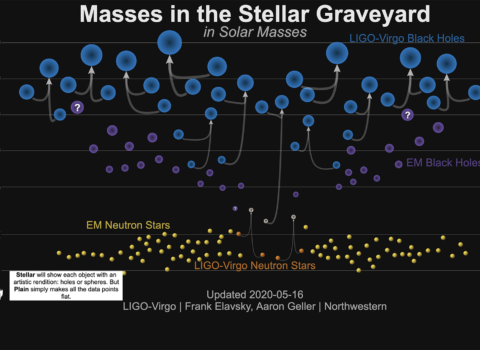
Masses in the Stellar Graveyard
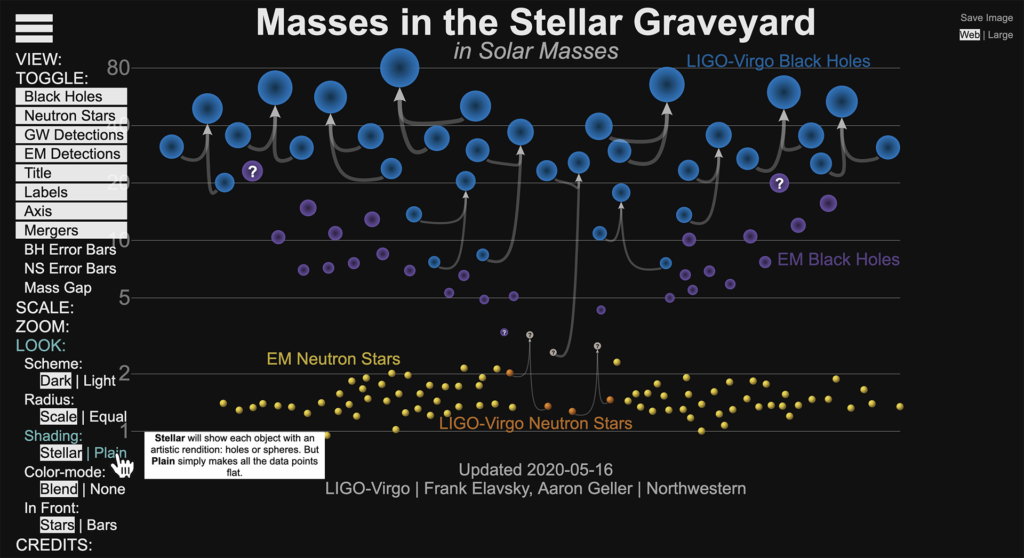
Masses in the Stellar Graveyard
Supported Browsers: Windows: Google Chrome Mac: Google Chrome or Safari
Visualization: LIGO -Virgo / Frank Elavsky, Aaron Geller / Northwestern
- Science,
- Education


Supported Browsers: Windows: Google Chrome Mac: Google Chrome or Safari
Visualization: LIGO -Virgo / Frank Elavsky, Aaron Geller / Northwestern
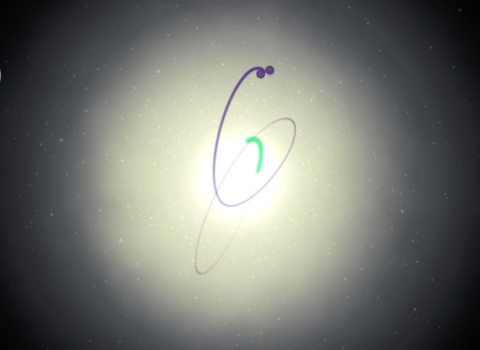
This video illustrates the collision of two neutron stars (GW170817).
LIGO-Virgo / Northwestern
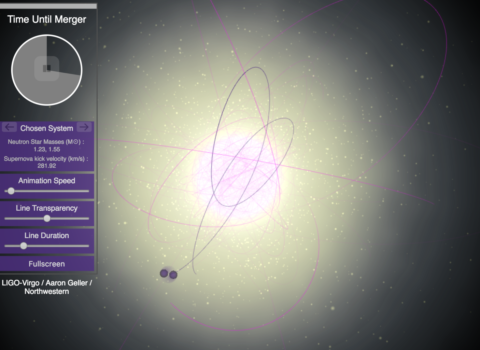
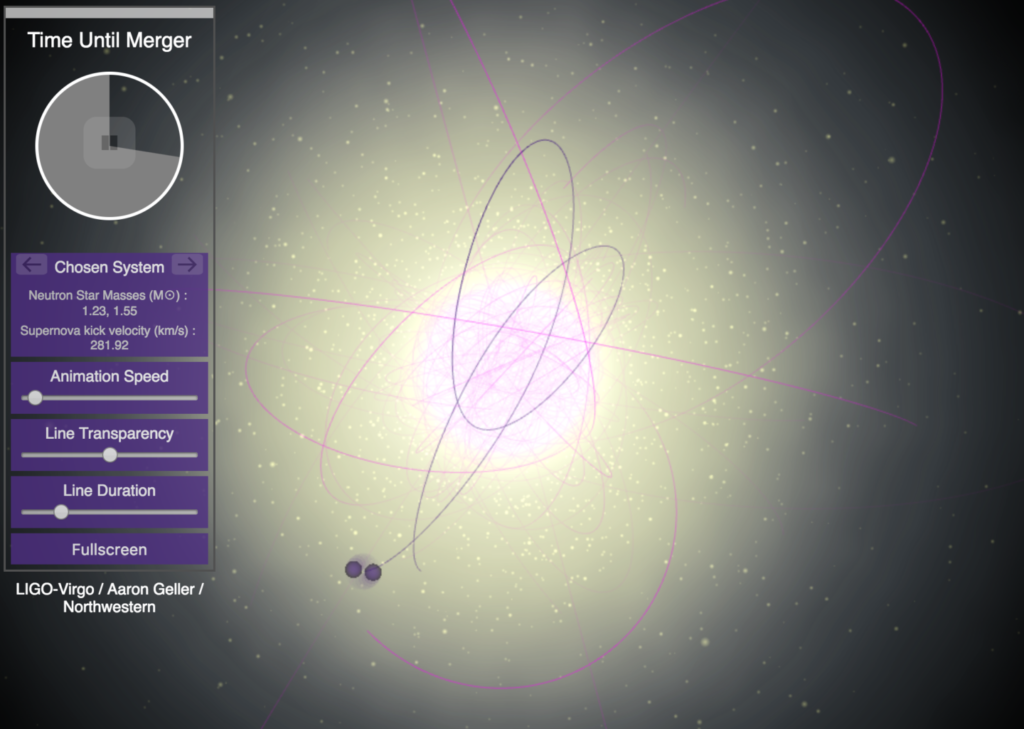
This interactive allows you to investigate possible past lives of the two neutron stars that merged in an event called GW170817 in the galaxy NGC 4993. The pair of stars—a neutron star and a normal star—orbit quietly, until the normal star undergoes a supernova, spawning a second neutron star and “kicking” the system into an elliptical orbit.
LIGO-Virgo / Aaron Geller / Northwestern
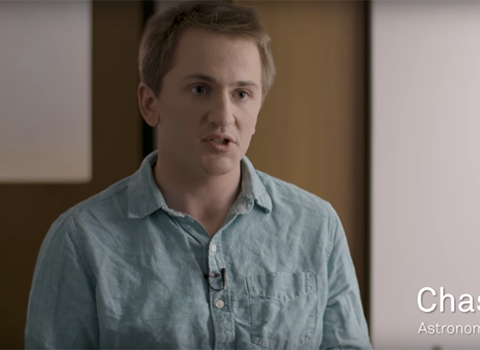
An international research collaboration, including four Northwestern University astronomers, is the first to detect the spectacular collision of two neutron stars in a nearby galaxy using both gravitational waves and light.
LIGO-Virgo / Northwestern
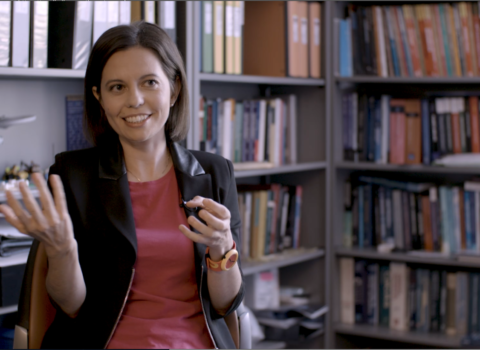
What is a neutron star? What is it like when two neutron stars collide? Northwestern University astronomers describe the GW170817 merger of these massive objects in our Universe.
LIGO-Virgo / Northwestern
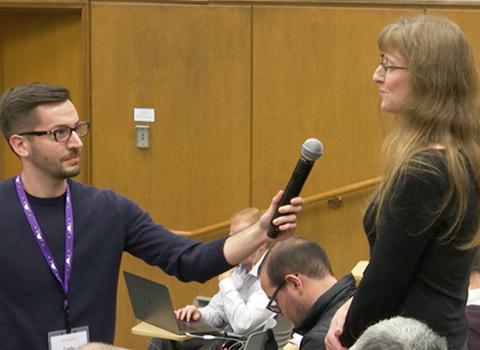
Following the October 16, 2017 announcement of the first-ever observation of a binary neutron star inspiral and merger, Northwestern’s astronomy research center, CIERA, held a discussion with the Northwestern scientists behind the discovery. View the audience question & answer period from this event.
CIERA / Northwestern
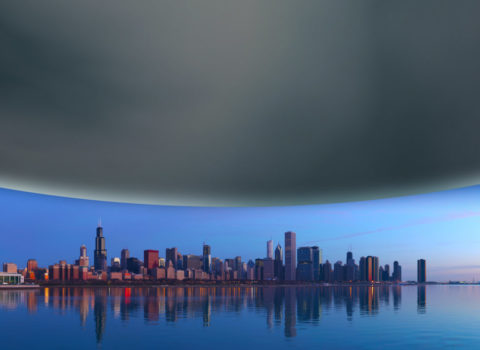
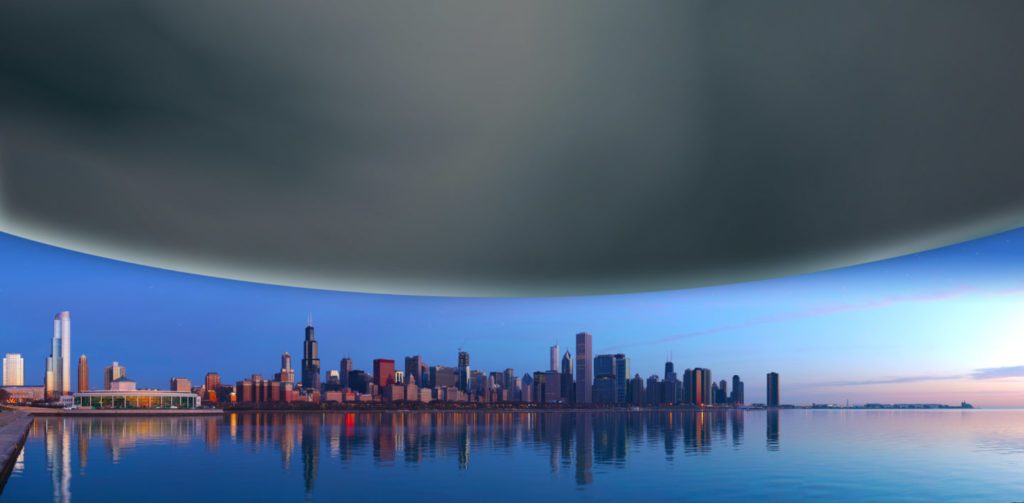
A neutron star compared with the skyline of Chicago. Neutron stars are about 12 miles in diameter and are extremely dense.
Nick Gertonson / Daniel Schwen / Northwestern / LIGO-Virgo
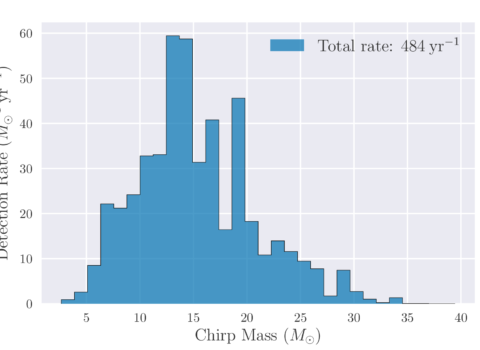
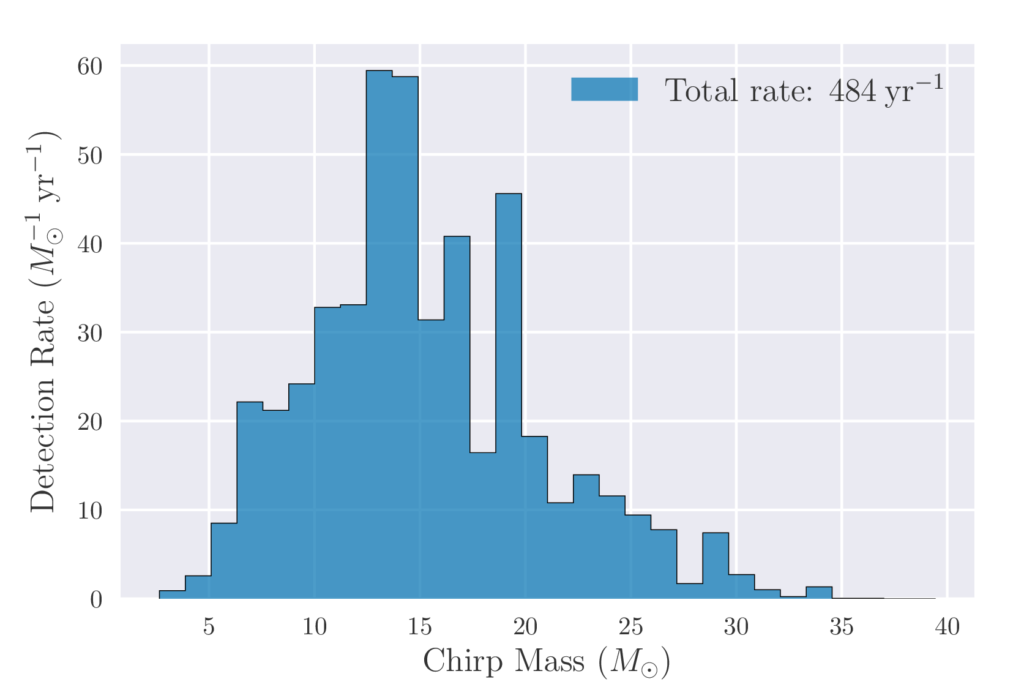
How many merger binary black holes are there? There are lots of uncertainties in our understanding of stellar evolution. This plot shows one prediction from the COMPAS population synthesis code for the number of gravitational-wave detections: there would be about 500 detections per year of observing time once our detectors reach design sensitivity! In Barrett, Gaebel,
Barrett, Gaebel, Neijssel, Vigna-Gómez, Stevenson, Berry, Farr, & Mandel (2018)
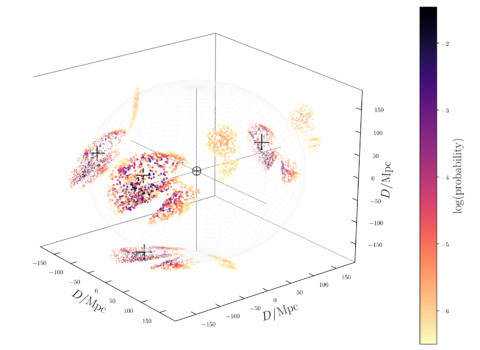

This image shows the most probable source galaxies for a simulated gravitational-wave signal from a binary neutron star system. Accurately identifying the source of gravitational waves is extremely important for directing follow-up observations with telescopes, and for measuring the expansion of the Universe. In Del Pozzo, Berry, Ghosh, Haines, Singer & Vecchio (2018; http://adsabs.harvard.edu/abs/2018MNRAS.479..601D) we applied
Del Pozzo, Berry, Ghosh, Haines, Singer & Vecchio (2018)
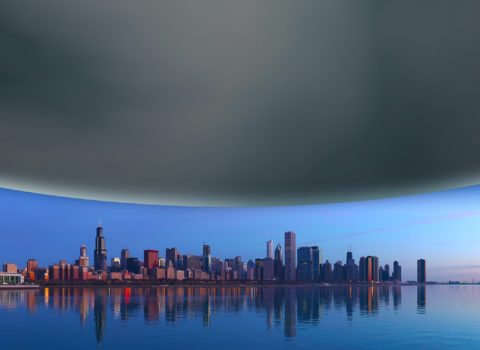
About 130 million years ago, two neutron stars collided, unleashing an explosion that rippled space-time and splattered the cosmos with a cocktail of heavy metals. Astronomers announced that they spotted the signals from that “kilonova” explosion, both in gravitational waves like the ones LIGO previously detected from merging black holes, and in signals across the
Science Friday
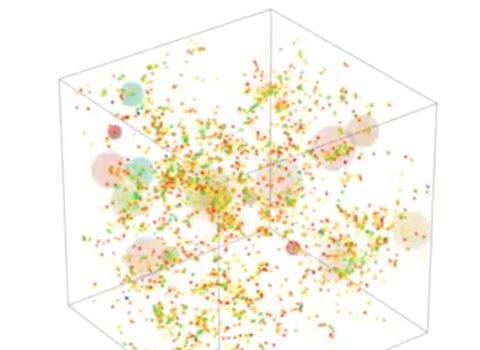
These are massive black hole mergers from the Illustris1 large-scale cosmological simulation (Kelley et al 2017). Gravitational wave bursts from the final merger of each black hole pair are shown with the color representing their initial strength.
Michael Katz / Northwestern
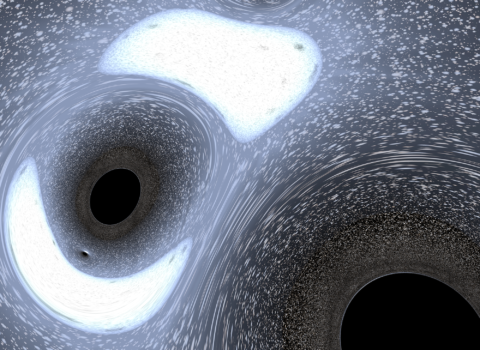
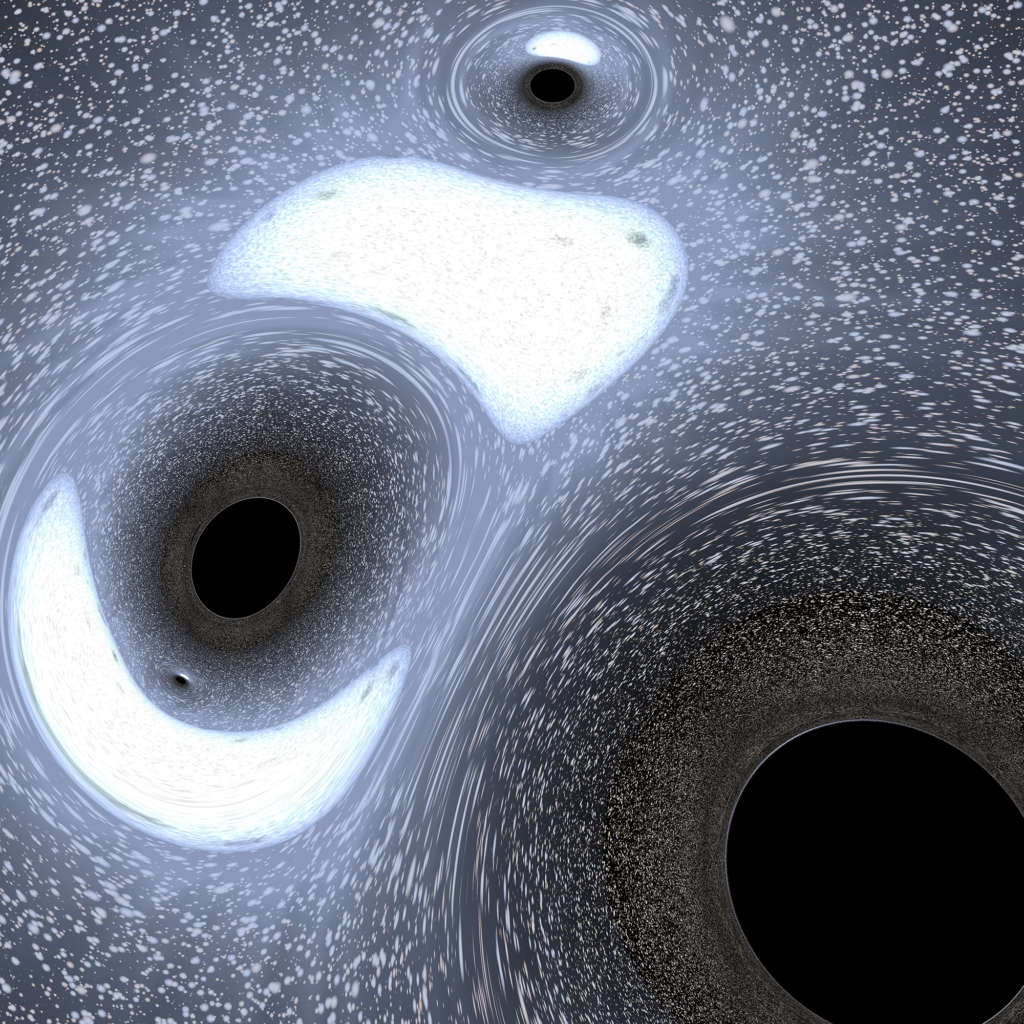
In late 2015, LIGO discovered gravitational waves emitted by two black holes (each with a mass of about 30 times that of our Sun) that spiraled together and merged about 1.5 billion years ago. Astrophysicists are now debating which is the most likely mechanism that can bring two black holes like those observed so close